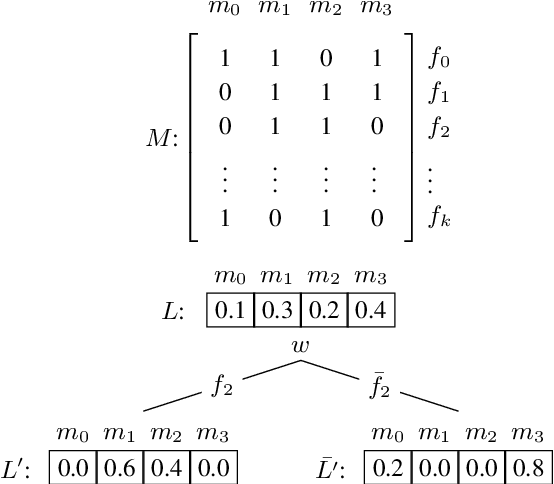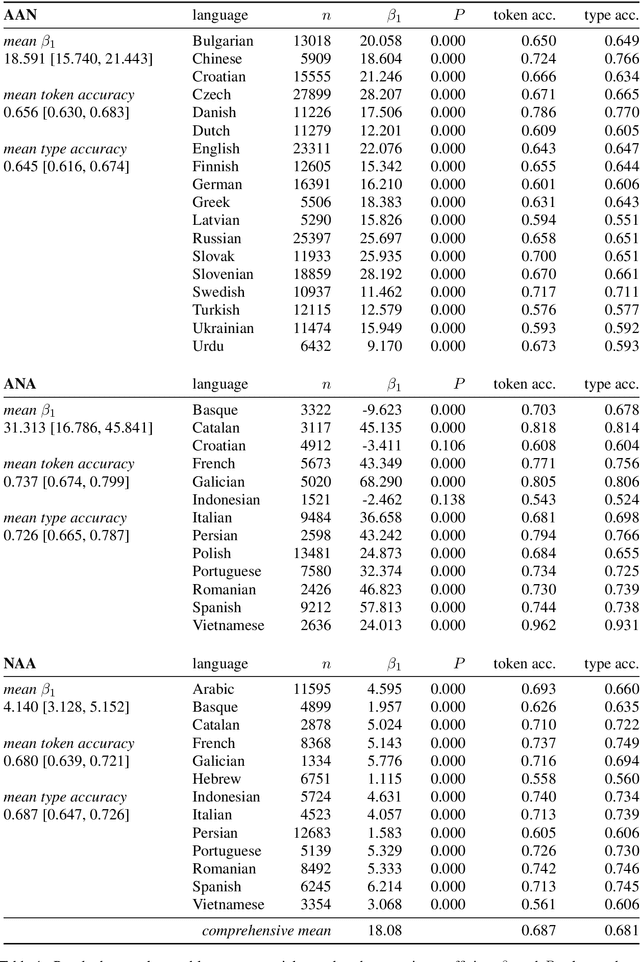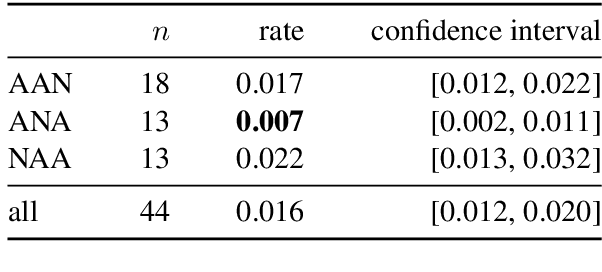Predicting cross-linguistic adjective order with information gain
Paper and Code
Dec 30, 2020



Languages vary in their placement of multiple adjectives before, after, or surrounding the noun, but they typically exhibit strong intra-language tendencies on the relative order of those adjectives (e.g., the preference for `big blue box' in English, `grande bo\^{i}te bleue' in French, and `alsund\={u}q al'azraq alkab\={\i}r' in Arabic). We advance a new quantitative account of adjective order across typologically-distinct languages based on maximizing information gain. Our model addresses the left-right asymmetry of French-type ANA sequences with the same approach as AAN and NAA orderings, without appeal to other mechanisms. We find that, across 32 languages, the preferred order of adjectives largely mirrors an efficient algorithm of maximizing information gain.
 Add to Chrome
Add to Chrome Add to Firefox
Add to Firefox Add to Edge
Add to Edge